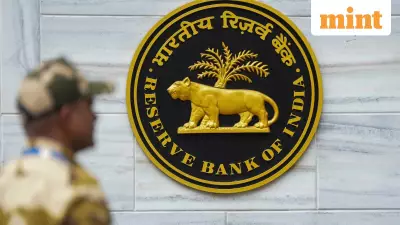
In a significant move to bolster India's export ecosystem, the Union Cabinet chaired by Prime Minister Narendra Modi has given its approval for a comprehensive Export Promotion Mission with an outlay of ₹25,060 crore. This strategic initiative comes at a crucial time when Indian exports, particularly to the United States, are confronting challenging market conditions including penal tariffs.
Comprehensive Support for Exporters
The newly approved Export Promotion Mission, which was initially announced by Finance Minister Nirmala Sitharaman during her Union Budget 2025 speech, is designed to operate for a six-year period spanning from fiscal year 2025-26 to 2030-31. The scheme aims to consolidate multiple existing export promotion initiatives into a single, unified mechanism, creating a more streamlined and efficient support system for Indian exporters.
Alongside the main mission, the Cabinet has also cleared the expansion of the credit guarantee scheme specifically tailored for exporters, providing additional financial security and enabling better access to working capital.
Priority Sectors and Strategic Focus
The Export Promotion Mission will provide priority support to sectors that have been particularly affected by recent global tariff escalations. These identified sectors include textiles, leather products, gems and jewelry, engineering goods, and marine products - all areas where Indian exports have faced significant international headwinds.
The mission structure comprises two well-defined sub-schemes that address different aspects of the export value chain:
Niryat Protsahan: Financial Empowerment
This component focuses on enhancing financial accessibility for exporters through multiple innovative instruments:
- Interest subvention for pre- and post-shipment credit to make financing more affordable for MSME exporters
- Development of alternative trade instruments including export factoring and deep tier financing
- Introduction of specialized credit cards for e-commerce exporters
- Collateral support for export credit to bridge existing gaps and enable inclusive access
- Support for emerging export opportunities through credit enhancement for high-risk markets
Niryat Disha: Infrastructure and Market Access
This segment addresses operational and market-facing challenges through comprehensive support mechanisms:
- Assistance for meeting export quality standards and technical compliance requirements
- Enhanced market access facilitation through international trade delegations and buyer-seller meets
- Development of export warehousing infrastructure to improve fulfillment efficiency
- Support for inland transport and handling costs, especially in remote districts
- Initiatives for export branding and packaging to strengthen India's global identity
- Trade facilitation and intelligence support to build digital capabilities
Strategic Timing and Expected Impact
The approval of this substantial export promotion package comes at a critical juncture for Indian exports. The timing is particularly significant given the current 50% tariff imposed by the United States on certain Indian exports, which has created substantial challenges for Indian businesses in international markets.
By consolidating multiple schemes into a single mechanism, the government aims to eliminate redundancy and create a more cohesive support system. The six-year duration provides long-term visibility and stability for exporters to plan their international market strategies with greater confidence.
The focus on MSME exporters is especially noteworthy, as these enterprises often face the most significant challenges in accessing international markets due to limited resources and higher perceived risks. The comprehensive nature of the support, addressing everything from initial financing to final market access, demonstrates a holistic approach to export promotion.
This initiative is expected to not only help Indian exporters navigate current challenges but also position them for sustainable growth in global markets, ultimately contributing to India's broader economic objectives and strengthening its position in international trade.





